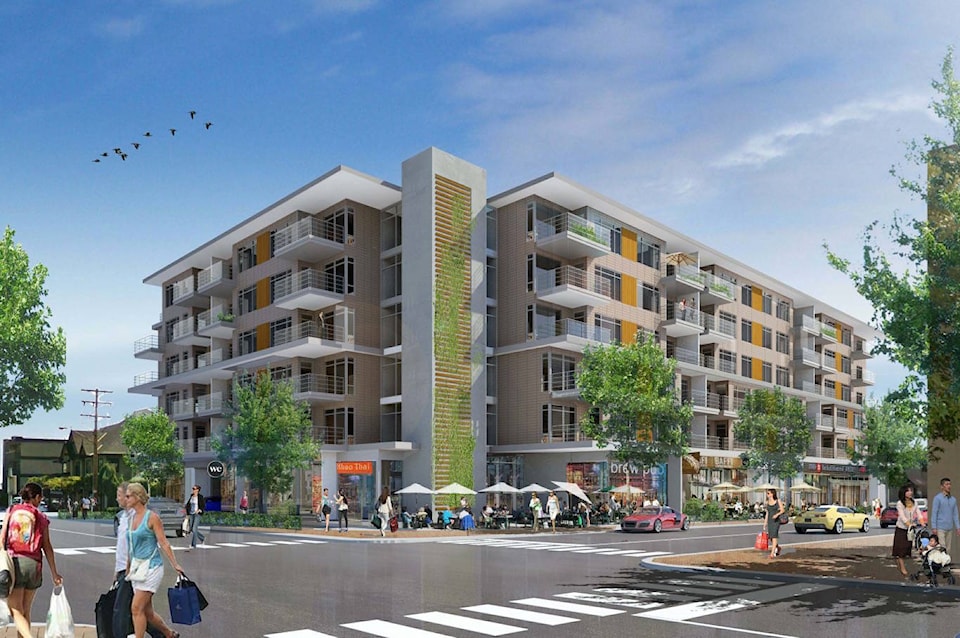The proposed development for the site of Sidney’s old fire hall has taken another step forward. Sidney council adopted its Advisory Planning Commission’s (APC) recommendation that the project move to the variance stage of the project with a final vote on the variance expected at the next meeting of Council on Sept. 24.
The project, designed by Praxis Architects and Chris Foyd, is actually two buildings. The first, a six-storey structure, is a mixture of one, two and three bedroom condominiums and features 22,000 square feet of commercial space on the ground floor.
A second building, placed on what is now a fire hall parking lot, will face Second St. and will house a mixture of office space and retail use.
One councillor, however, remained unconvinced that the project is the right fit for Sidney.
“People like the small town character of Sidney and the Official Community Plan (OCP) recognizes that.” said Councillor Peter Wainwright.
“This building is very large and despite some improvements from the APC’s review it (the existing plan) still gives the appearance of a single large building stretching over half a block. This isn’t in keeping with the community vision of Sidney and our OCP.”
Wainwright explained that, beyond his fear that the development will contribute to a fundamental change to the community’s character, he also had significant concerns regarding the parking.
The plans before Council called for a total of 86 underground parking spaces for the 82 residential units (reduced from the original 85) and for the employees of the commercial space. All of that parking would be restricted access with no public availability for visitors to the residences or customers of the businesses in the building.
The development also calls for replacing the 47 public parking spaces of the town’s Lot B with 30 spaces of town operated parking and an additional 5 surface spaces at the development itself for a net loss of 13 spaces.
“That may not be a major issue if the commercial space is all taken up by something like real estate offices, but if the tenants are a restaurant, it could have major consequences,” said Wainwright.
Issuing a variance for the project does not require a public meeting or hearing of any kind, but Wainwright is still hopeful that, once the public becomes aware of the project through the mandatory advertising requirement for the variance, there may yet be a chance for people to express their concern.
“The offer currently requires a development permit to be in place by Oct. 20, but this is a timeline put in place by the proponent and could be pushed back. If there was enough public concern about the plan, council, who will be in the midst of an election campaign at the time of the September meeting, may choose to push back a variance decision to the new council after the election,” explained Wainwright.
“That would give the public a chance to weigh in and for real consideration of the planned development to happen.”
He added that one of his concerns about the process to date is the speed that has characterized the development application to date. He pointed to other projects where a more measured approach has been taken and has yielded very good results.
“When we did the Pier development, the process took more than six months and included a public hearing. We came away from that negotiation with substantial benefits for Sidney. The recent Cameo Development had an open house and, since it was a rezoning, there was a public meeting,” said Wainwright.
“When you get that sort of input, you can at least gauge the public’s level of support or opposition.”
